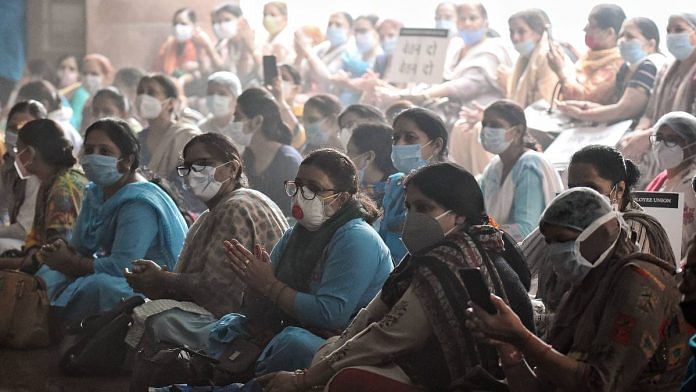It is critical to prepare the ‘demographic dividend’ of the country as per the demands of the changing job roles, said Prime Minister of India, Narendra Modi on 21 February 2022. India prides itself on being the youngest workforce in the world with an average age of around 29. Indians bet a lot on their demographic dividend and hope to emerge as a global power, banking on this advantage.
The demographic dividend advantage is a finite period in a country’s growth during which its dependent population age either between 1-14 or above 60, is lower than its independent population, aged 15 – 59. The independent population comprises the country’s workforce and is expected to drive development. India as a whole is believed to have entered this period in the previous decade, and it is projected to peak towards the end of this decade or the beginning of the next. However, a few developed states such as Tamilnadu, Kerala, and West Bengal are already towards the end of the phenomenon with their state average age higher than the national average age.
The process of reaping benefits through this demographic transition is not automatic and requires a favorable climate. The most basic among these conditions is a well-educated and healthy population. It is no secret that India’s national spending on human development indices including education and health is still low. The acclaimed economist Amartya Sen, when talking about India’s development said, “India is the only country in the world which is trying to become a global economic power with an uneducated and unhealthy labour force.”
The Covid pandemic put immense pressure on our socio-economic frameworks and naturally, the resources of the healthcare sector were stretched to their maximum. While the infrastructure problems such as shortage of oxygen, hospital beds, etc. were discussed more widely, there was little attention paid to the welfare of the medical staff. The government’s strategy of showering flowers from helicopters or clapping from balconies did little to ease the workplace pressure on healthcare workers.
Incidentally, Indians are the largest employed medical fraternity on foreign land. Better living standards and spending power advantage encourage many to take the leap.
Also read: Stretched to breaking point, say govt hospital doctors in Delhi, call for better quarantine
Migration of medical talent
The 2017 OECD data showed 69,000 Indian-trained physicians worked in the USA, UK, Canada and Australia, closely followed by 56,000 nurses from India working in these four countries alone. India has the highest number of doctors and nurses migrating to foreign countries for employment. We must understand that India is supplying these talents elsewhere when the conditions at home are dire and needs immediate attention. Even the most developed states in India don’t meet the UN recommendation of a 1:1000 patient-doctor ratio.
Some major reasons medical talent leave the country are higher pay, regulated work hours, better security in the form of insurance, strict policies for administrative accountability, and access to better technology. The richer Asian countries like Japan, China, and South Korea efficiently leveraged their demographic dividend advantage and built robust infrastructure specially focused on progressive health policies and competent public financing for health. If India seeks to grow into a global power, the current trend of increasing export of quality talent in the healthcare sector is worrisome. The pandemic has increased the demand for healthcare workers everywhere and the developed world is implementing migrant-friendly policies, especially for the healthcare workers willing to migrate.
Migration is as old as civilisation and our hyper-globalised world presents a perfect ecosystem for the same. It is near useless to brand the personnel leaving the country as ‘brain drain’ We are all citizens of the earth, and leveraging better opportunities to further one’s knowledge and resources, and its recognition can help us strategize and derive benefits out of the scenario. The issue of medical talent migration represents a classic case of India losing its brightest for reasons that are fixable with better workplace policies, ensuring social security, and increasing investments in the healthcare ecosystem.
If India doesn’t formulate better social policies and adapt scientific implementation strategies, even a century of demographic dividend advantage won’t yield any potential value.
The author is a student at Mount Carmel College, Bangalore. Views are personal







